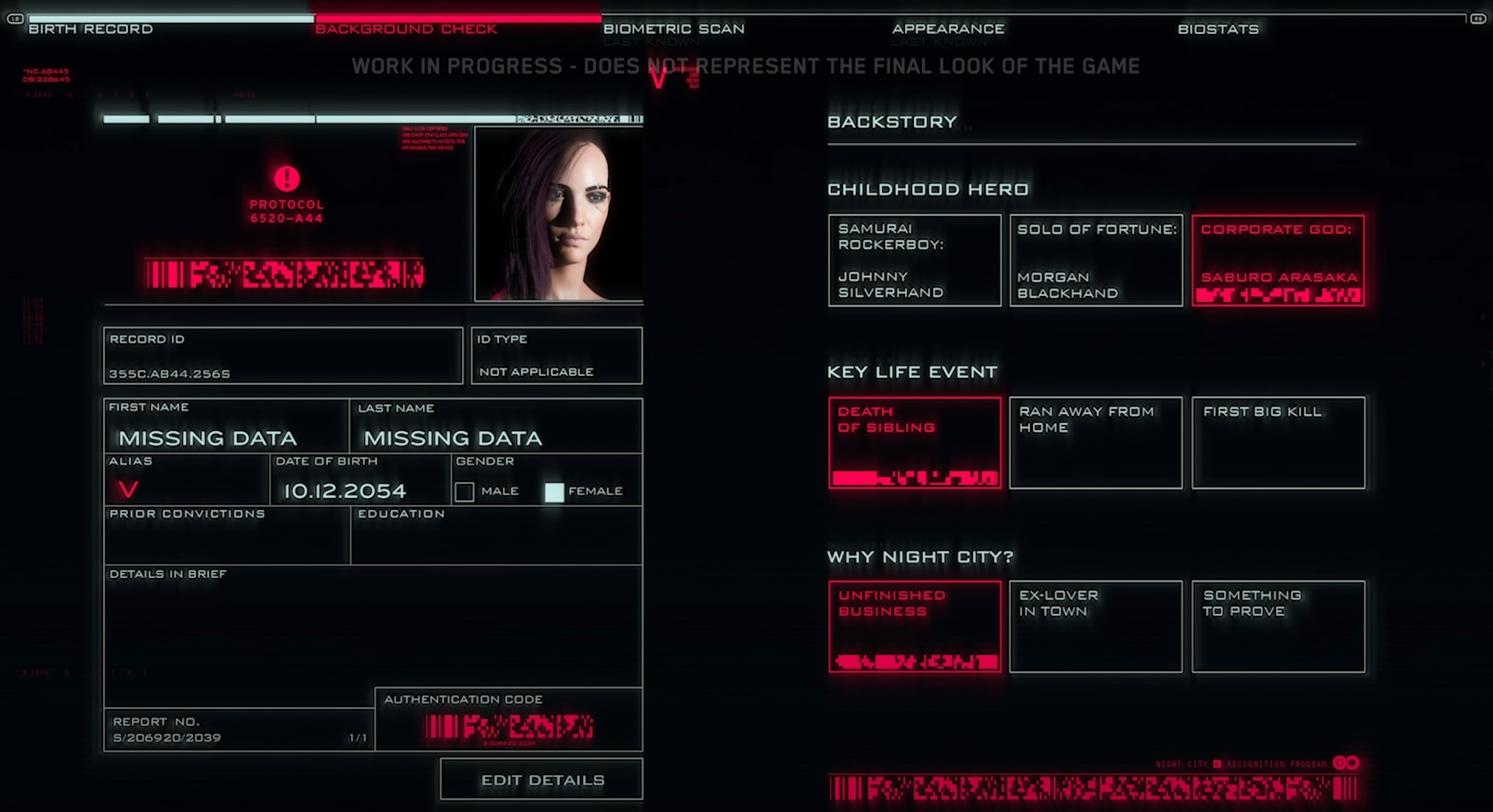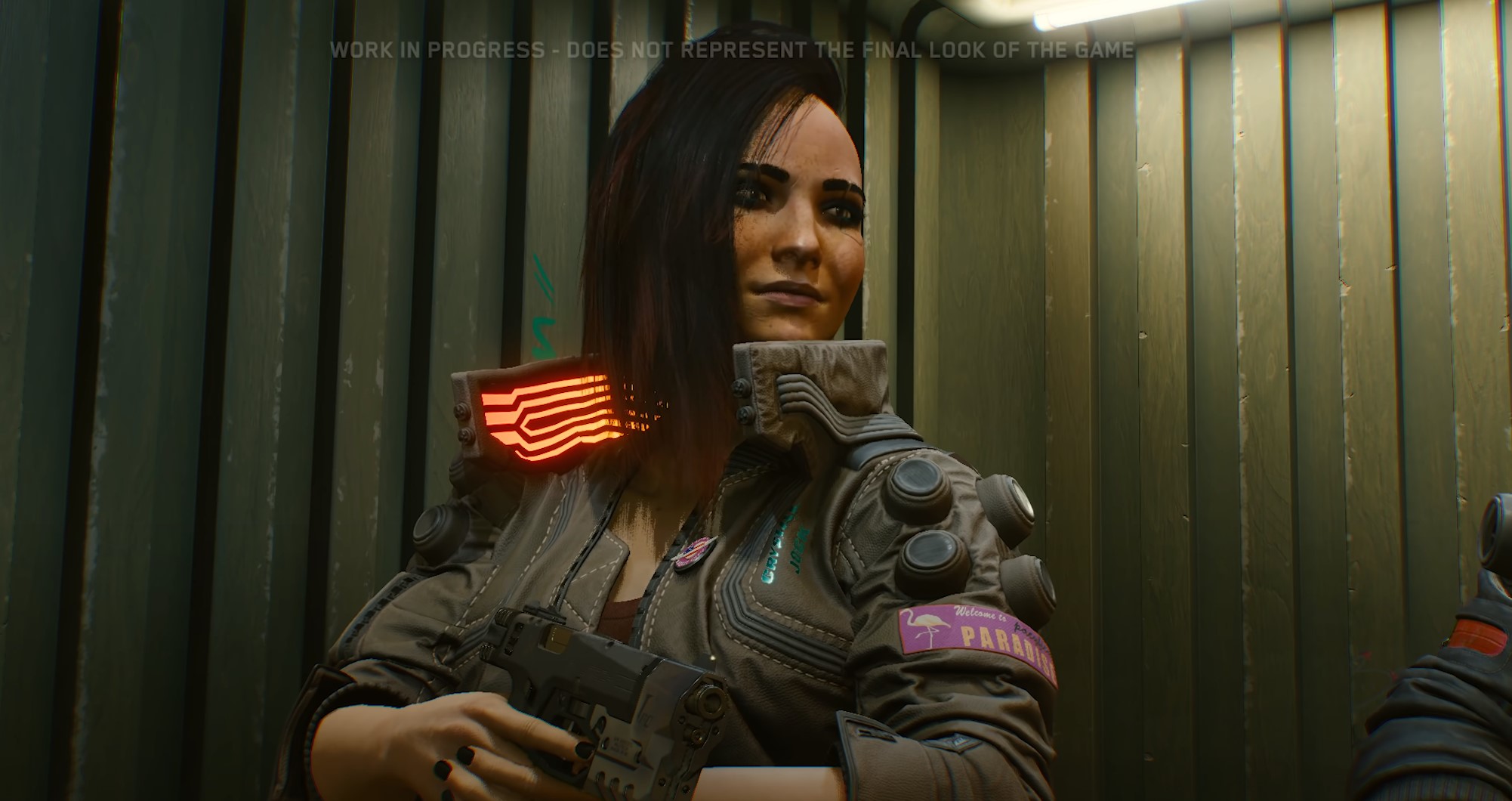9 features that didn't make it to the final version of Cyberpunk 2077
The road to Night City was long, and Cyberpunk 2077 was destined to change over 7 years of conception and development. In demos, like the lengthy 2018 walkthrough, CD Projekt Red was careful to point out the game was still in progress, with nothing you saw on screen set in stone. Now that Cyberpunk 2077 is out, it's interesting to look back at what made the cut, what didn't, and how CD Projekt Red had talked about those aspects of Cyberpunk in interviews and its own marketing.
Despite Cyberpunk 2077's buggy launch, comparing the released game to the 2018 demo shows that CD Projekt Red made many improvements in two years, especially in its lighting. Night City is more colorful and vibrant than it was in 2018, and many of the NPC character models in the demo look much better today.
There are plenty of things in that 2018 demo that changed for the final game, but most feel like natural changes to missions when they're placed in the context of a complete game rather than just a standalone demo. There's a boss fight in the demo in which Jackie flips up a car to block a hail of bullets, for example. That scripted sequence isn't in the final game, but NPCs elsewhere in Cyberpunk 2077 perform the same action. V uses combat actions throughout the demo that aren't available early in Cyberpunk, but are still unlockable later in the game.
Other changes are more striking, though, and show where CD Projekt Red had to redesign features that just weren't working or were too ambitious to ship. Here are some of the major ways Cyberpunk 2077 changed over time.
Backstories changed to life paths

In the 2018 gameplay reveal, the character creator let you pick between three backstory options in three categories: Childhood hero, Key life event, and Why Night City? These choices presumably would've affected how other characters react to you and at least your introductory quest. When CD Projekt Red showed off the game again in 2020, these choices had been replaced with three Lifepaths: Corpo, Nomad, and Street Kid.
In an interview with VG 247, designer Mateusz Tomaszkiewicz said "Having players shape V’s backstory through a series of choices, like selecting your childhood hero, a key life event, and the reason for choosing to go to Night City, was one of the ideas we were looking at and iterating on earlier in development for character creation. However, the longer we talked about it, the more we felt we wanted to make these choices more meaningful and impactful. This is how we came up with the idea for life paths… Our goal was to equip players with as many customization and roleplay options while also fleshing out these totally different perspectives on Cyberpunk 2077’s world for V as a character. I think the life paths system is something that helped us do just that."
Wall running removed for "design reasons"
The 2018 demo briefly showed V having the ability to run on walls, then clamp in place with mantis blades. In a 2020 interview with Gamereactor, CD Projekt Red level designer Max Pears said, "That is something that we removed due to design reasons, but there's still going to be a lot of flexibility in how you move, that's for sure."
Acid rain was mentioned, but never shown
In a 2019 interview, UI coordinator Alivn Liu talked about Cyberpunk's weather system, confirming it would have dynamic weather. "We've got acid rain as well," he said. "Night City is a very polluted city and we're also exploring that kind of stuff, pollution and global warming and everything."
When asked if NPCs would scatter when acid rain starts, he replied "Yep, that was happening in The Witcher 3 too. When the rain came, people would seek shelter. Generally, we're trying to make the NPCs very believable, we want it to feel like this is a world where people actually live in, which would make players want to spend time in the world as well."
Perhaps the rain in Night City is unhealthy for its citizens, but they don't react to it by hiding. NPCs seem to walk the streets in rain the same as they do on sunny days.
The subway was shown, but never confirmed as rideable
The E3 2018 gameplay trailer begins with a shot of the Night City metro map on a subway train. V walks through the crowded train, pushing past NPCs, and then the train emerges from a tunnel to show an elevated railway through the heart of Night City. It was a compelling introduction to Night City. Though the trailer is labeled "Game Engine Footage," CD Projekt Red never said Cyberpunk 2077 would have rideable trains or a fully working subway. The subway was also featured in at least one promotional screenshot.
In 2020, developer Miles Tost confirmed it wouldn't be rideable, and that the fast travel system would be tied to tourism boards throughout the city. By clicking on one of those boards, you can teleport to another one—by taking some form of public transit, in-fiction.
There are still trains traveling through Night City, and even train stops—but you can't enter them, as they're blocked off by a barrier that prompts you to pick a fast travel destination. The trains are purely for flavor.
Police could be corrupt, and NPCs will react to you killing civilians
The police system in Cyberpunk 2077 has been heavily criticized. Do crime, and police simply spawn in near you. You can watch it happen. The system doesn't depend on your crime being witnessed, and the cops don't use vehicles to approach your location or give chase. They just spawn in, guns blazing.
In a 2019 interview, CD Projekt Red's Alvin Liu vaguely described a much more ambitious approach to the police, though it doesn't touch on how they would actually attack players.
"[The police] are basically up for hire," he said. "The laws exist to take bribes from corporations. So a corporation might pass a law that you can't sell medicine anymore, and they're going to enforce it. The only reason they got that law passed was that they bribed the government and they're only using it as a proxy. So it's not a place where you want to trust the government necessarily. There probably are some good people out there also, but it's a city of people trying to constantly get one up on each other.
"We have a system that we're still iterating upon. People will, you know, not be nice to you if you start killing many people. There are some people you can't kill because that might have blocked a quest and that's just by design, but it's not what our game is based upon. So I would compare it to The Witcher 3 where if you chopped off the head of a villager in the middle of nowhere the guards wouldn't show up out of nowhere. But if you're in a big town and someone from the guard sees you and the people nearby run away screaming for help, people will come and try to stop you and they're going to be usually pretty powerful."
In the final game, police will come after you even without witnesses, and killing civilians doesn't affect how NPCs treat you in any way that we've seen.
Vehicle customization was planned
This was never a heavily promoted feature, but in an E3 2019 interview, designer Miles Tost said, "There will be some customization options. For the bikes they're fairly limited at this point in time, however we're always looking for ways to expand our arsenal." A year later, at E3 2020, another interview confirmed that vehicles would not be customizable.
Advertisements tailored to V would point you to vending machines
In the E3 2018 demo, CD Projekt Red showed an advertisement changing when V looks at it, recommending the plate go buy its product at a nearby vending machine. The voiceover explains: "A big part of our RPG experience is having a world that is interactive. Here a generic ad has morphed into an advertisement specifically tailored to V, informing her of the nearest vending machine to purchase the product. In this case, it shows us where to purchase some Nicola soda."
In the final game, ads remain static.
V could hack into individual enemies with a cable to access their network
Hacking was originally planned to be much more complex, at least in presentation. The E3 2018 demo showed V jacking directly into an unconscious Maelstrom gang member's skull, which granted access to an elaborate network map of the entire building and gang infrastructure. In the final game, V can jack into most terminals to steal money and quickhack crafting supplies, or into laptops to turn off security systems, but that's about it.
His scan tool lets him use quickhacks on cameras, turrets, and enemies to effectively 'see' the infrastructure of a given building. Just don't expect a jack-in animation or fancy digital interpretation of the local network.
Some cutscenes were once in third-person

If there was ever a point when Cyberpunk 2077 was a third-person game like The Witcher, CD Projekt Red didn't show it off. The developers never showed an option to switch perspectives as you can in The Elder Scrolls games—but in its 2018 gameplay demo, Cyberpunk 2077 did have some third-person cutscenes, like the dialogue sequence with Jackie above. In scenes like that, players would be able to see their customized V without looking in a mirror.
By 2019, CD Projekt Red had decided to commit to "100% first person" to help achieve "full immersion." The one remaining exception is driving, which lets you switch to third-person.

Post a Comment